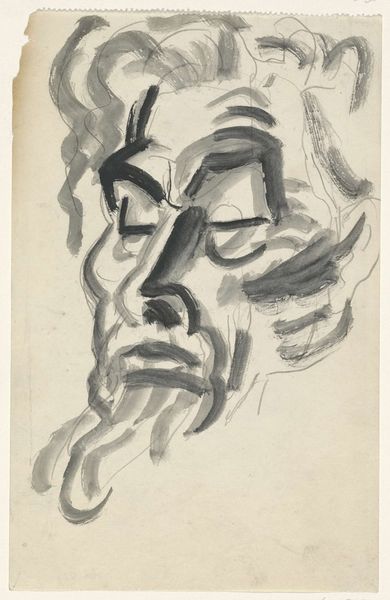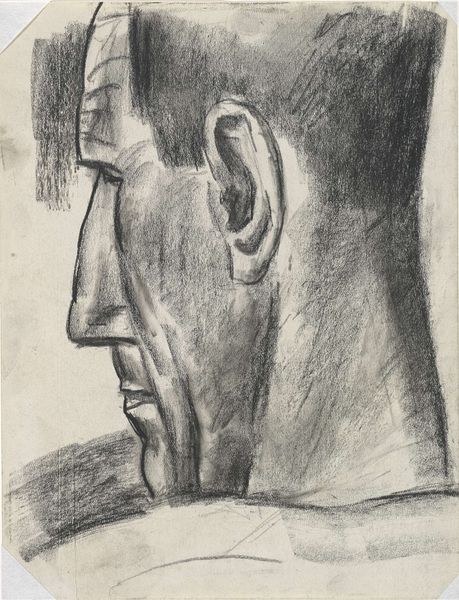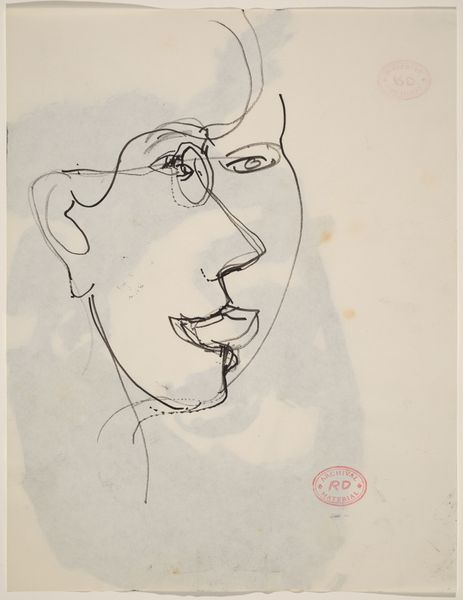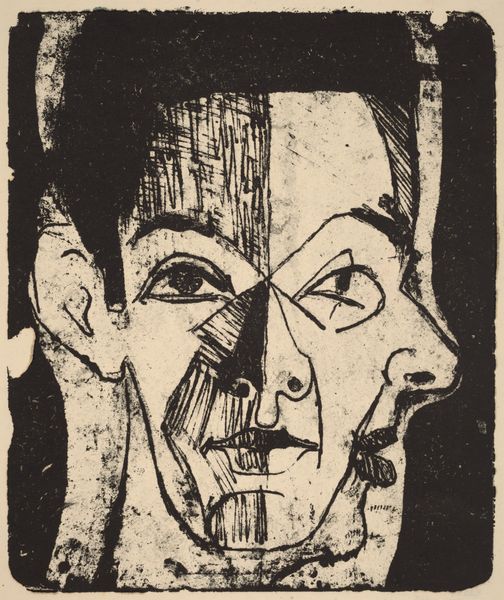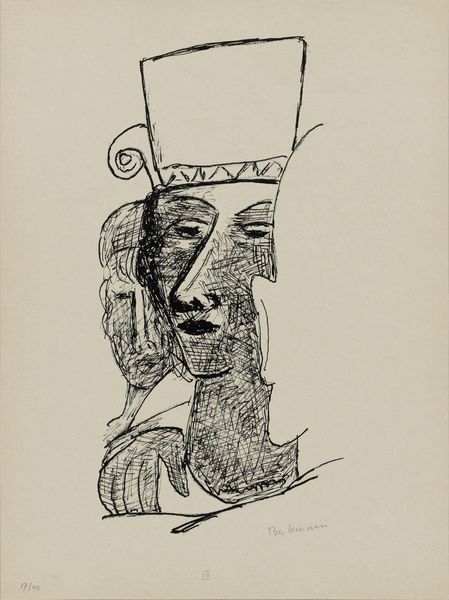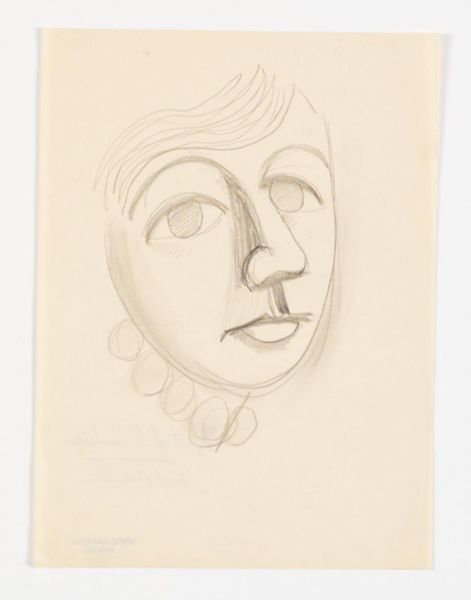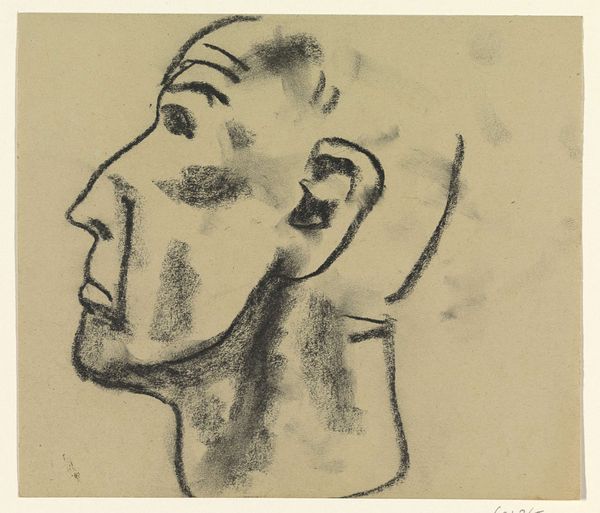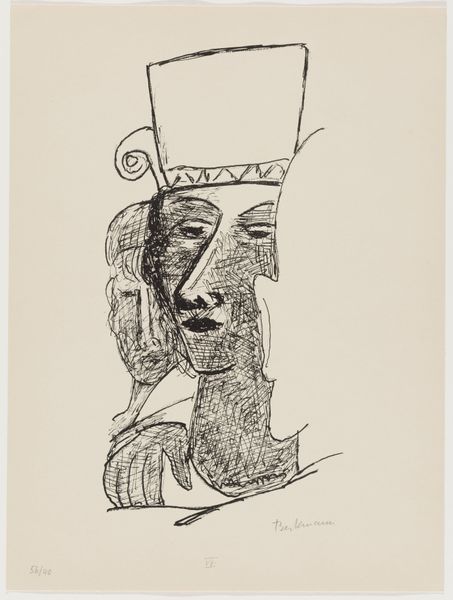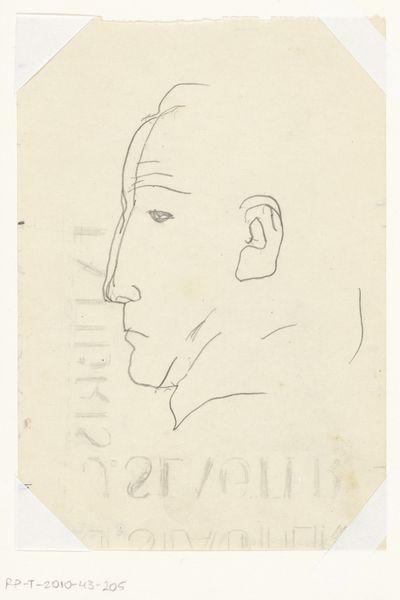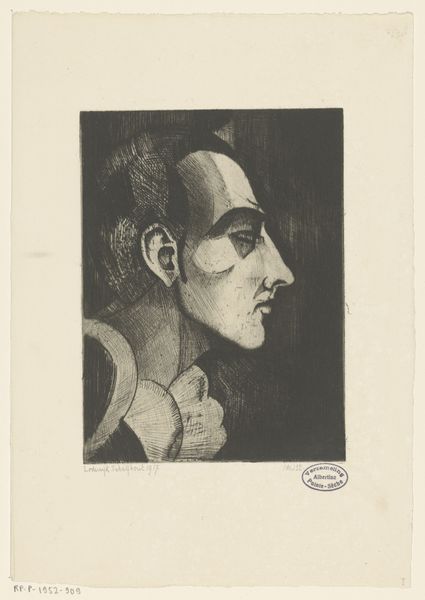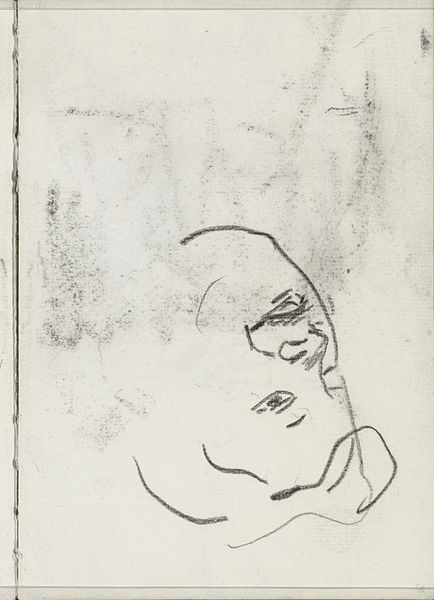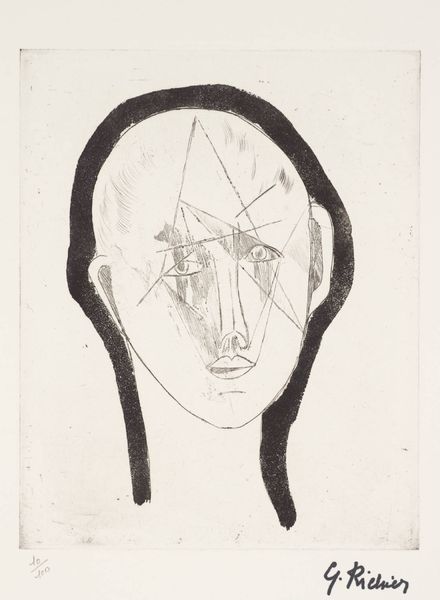
drawing
#
drawing
#
aged paper
#
toned paper
#
light pencil work
#
pencil sketch
#
personal sketchbook
#
ink drawing experimentation
#
sketchbook drawing
#
portrait drawing
#
watercolour illustration
#
sketchbook art
Dimensions: Overall (approximate): 7.5 x 6.9 cm (2 15/16 x 2 11/16 in.) support: 16 x 10.9 cm (6 5/16 x 4 5/16 in.)
Copyright: National Gallery of Art: CC0 1.0
Curator: The work before us, titled "Peasant Head," is a pencil drawing created by Elena Liessner-Blomberg in 1922. Editor: Oh, it’s kind of wonderfully unsettling, isn't it? A geometric deconstruction of a face staring back at you. Almost like a map of feelings rather than a straightforward portrait. Curator: Yes, it’s fascinating how she breaks down the human form into these simplified shapes. Note how she’s juxtaposing the circular form of the head with rectangular shapes. And the eyes, like two windows peering out. There's a clear experimentation here with the flattening of the picture plane that Cubism introduced. Editor: Cubism for the common soul, perhaps. It does make you wonder about the artist’s intention, or the story behind those eyes, and even behind that interesting beard drawn with multiple parallel lines to represent a coarse texture. It could easily have been someone from her personal circle. A partner? Or maybe just an anonymous passer-by she felt like immortalising, in a weird way. Curator: Indeed, this rendering invites introspection. Those abstracted forms can point to symbolic interpretations of identity and labor during that era. Peasants were often romanticized or stereotyped, but this image steers clear of sentimentality. It seems interested in conveying something more fundamental, something essential about this person’s presence. Editor: It makes me think about what’s really ‘seen’ when we look at another person. How much do we really understand of them beyond just these basic geometric clues? There’s this palpable sense of observation without judgment. She managed to create an incredibly thought-provoking piece with very few strokes of pencil, like catching a fleeting thought in the air. It’s also slightly humorous, like a philosophical cartoon of the self. Curator: And there's the material aspect as well. The work is created on toned paper, lending a subtle warmth and sense of age. That textural element helps further evoke that sense of rustic simplicity. It suggests the earthiness and the reality of working people in that period. Editor: Well, now I see much more in it! Thank you for unveiling this silent visual story, filled with subtle geometry and unexpected feeling. Curator: My pleasure, these artworks offer continuous entryways into richer cultural and human understanding.
Comments
No comments
Be the first to comment and join the conversation on the ultimate creative platform.
